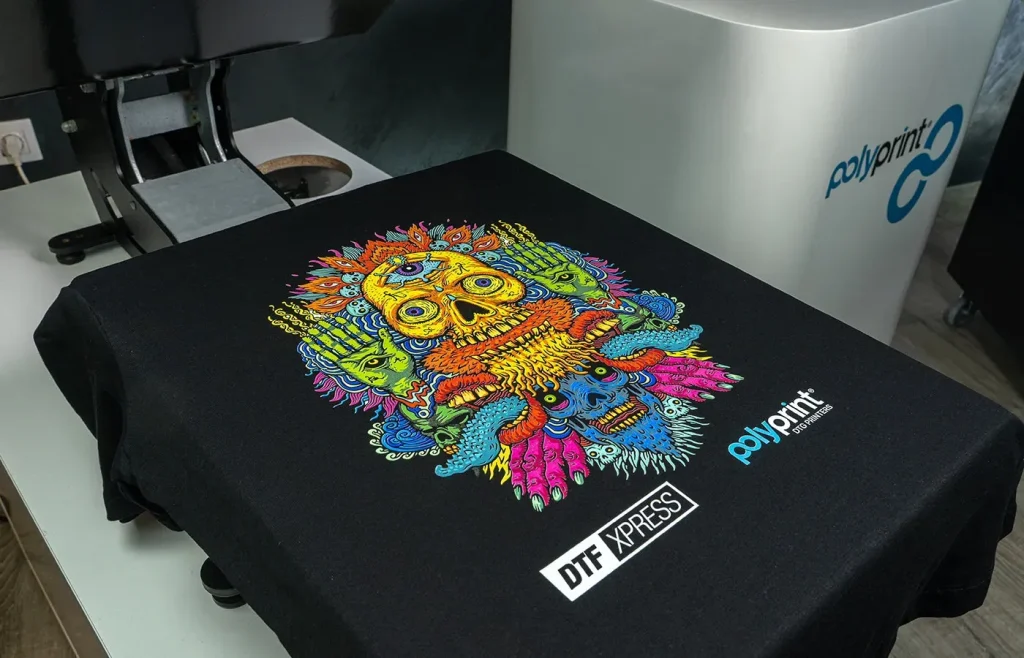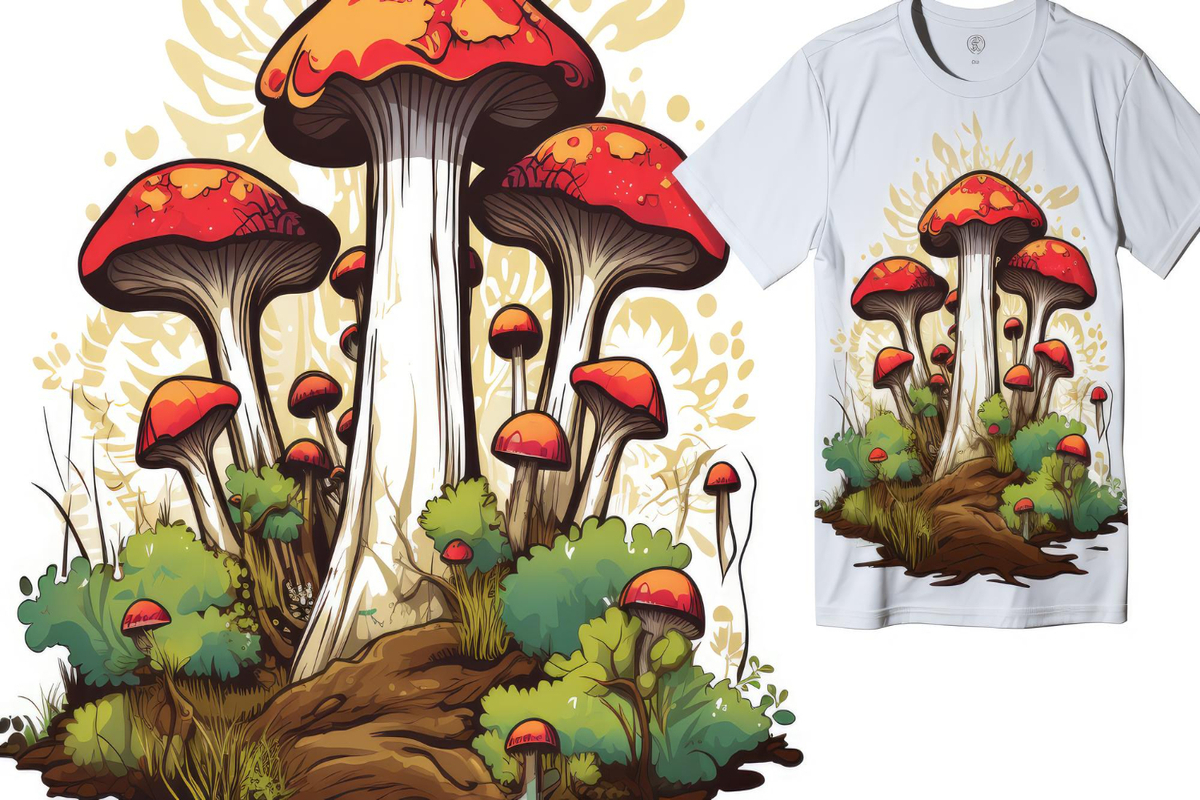DTF printing, or Direct-to-Film printing, is revolutionizing the custom apparel industry by providing a modern and efficient solution for garment decoration. As businesses strive to meet the growing demands for high-quality prints, DTF offers a unique blend of versatility and cost-effectiveness, making it an attractive option for printing professionals. This innovative technology allows for stunning designs to be transferred onto various fabrics, ensuring that intricate details are captured with clarity and vibrancy. What’s more, DTF printing supports sustainable printing practices by utilizing eco-friendly materials, appealing to the environmentally-conscious consumer. In this rapidly advancing market, understanding the benefits of DTF printing is essential for any business looking to thrive in the competitive landscape of custom apparel.
Also known as Direct-to-Film technology, this method of printing has been gaining attention for its ability to produce vibrant, high-resolution images that elevate the quality of custom clothing. By leveraging advanced techniques to transfer images onto film before applying them to garments, DTF provides a reliable and efficient solution for apparel manufacturers. This method not only caters to a diverse range of fabrics but also aligns with sustainable printing practices, making it a progressive choice for businesses aiming to reduce their environmental footprint. The benefits of adopting this technology are significant, spanning from cost savings to enhanced production speed, which can greatly improve customer satisfaction. As the demand for custom apparel continues to grow, incorporating DTF technology is becoming synonymous with staying at the forefront of the industry.
Understanding the Mechanics of DTF Printing
Direct-to-Film (DTF) printing is a revolutionary technology that simplifies the apparel decoration process. It involves printing a design onto a specialized film using high-quality inks, which are then transferred to fabric through a heat application. This method not only enables vibrant, colorful designs to come to life but also ensures that the print feels soft to the touch. Because DTF printing can be used on a variety of fabrics, from traditional cotton t-shirts to polyester blends, it demonstrates versatility that many traditional printing methods lack.
Unlike other methods, DTF printing allows for a quicker setup time which significantly reduces the waiting period for custom orders. The ability to print fine details and vivid colors means businesses can cater to complex customer requests without the fears of color mismatching or fading. Thus, understanding how DTF printing works is crucial for businesses looking to innovate and stay competitive in the custom apparel landscape.
The Advantages of High-Quality Prints with DTF
When it comes to producing stunning apparel, high-quality prints are non-negotiable. DTF printing stands out because of its unparalleled ability to deliver rich colors and intricate designs that pop. Many entrepreneurs recognize that the marketplace is saturated, and having eye-catching designs can make all the difference in attracting consumers’ attention. By leveraging DTF technology, businesses provide prints that maintain their clarity even after numerous washes, extending the garment’s lifespan and overall value.
Additionally, DTF printing offers a soft feel compared to traditional methods that often leave stiff textures. This is particularly appealing for customers who prioritize comfort alongside aesthetics in their custom apparel. As a result, businesses embracing DTF can achieve a unique selling proposition by highlighting the quality of the prints, appealing to clients who prioritize both form and function in their clothing choices.
Versatile Opportunities in Fabric Compatibility
One of the most significant advantages of DTF printing is its compatibility with a diverse range of fabrics. Unlike traditional screen printing, which is often limited to specific materials, DTF technology excels at transferring vibrant designs onto everything from natural fibers like cotton to synthetic fabrics like polyester. This means businesses can expand their offerings, catering to clients looking for a variety of apparel options, including t-shirts, jackets, and sportswear.
The versatility of DTF printing inherently opens up opportunities for creative exploration. Businesses can try new fabric combinations and unique merchandise offerings without the worry of machines being set up for only a limited range of materials. By highlighting this adaptability, companies can distinguish themselves in the competitive landscape of custom apparel, ultimately appealing to a broader customer base.
Cost-effectiveness and Increased Profit Margins with DTF
Cost management is key for businesses, particularly in the custom apparel sector where margins can be slim. DTF printing presents a more budget-friendly alternative to traditional methods such as screen printing or Direct-to-Garment (DTG) printing. With DTF, there is minimal preparation required, and this translates to lower production costs. This enables businesses to offer competitive pricing which can attract more customers seeking quality apparel without the premium price tag associated with lesser-known printing techniques.
Moreover, the reduced waste associated with DTF printing makes it an appealing choice for eco-conscious businesses. By minimizing excess materials and enabling quick adaptations to different orders, companies can optimize their resources effectively. This cost-effective approach not only increases profit margins but also positions businesses favorably in a market where sustainability is becoming increasingly important.
Meeting Demands with Faster Production Times
In a world where consumer expectations for quick turnaround times are higher than ever, DTF printing offers solutions that can help businesses keep pace. The technology’s efficient setup allows for expedited production cycles, making it feasible to tackle urgent orders without sacrificing quality. By investing in DTF capabilities, apparel companies can position themselves as reliable partners to customers needing quick, high-quality custom apparel.
Faster production times not only enhance customer satisfaction but also enable businesses to take on larger order volumes. The capability to handle varying sizes of orders, from small to bulk, means companies can increase their output and profitability. By promoting a reputation for speed and quality, businesses are likely to gain repeat clients who value timely delivery and dependability in custom apparel services.
Eco-Friendly Printing with DTF: A Sustainable Choice
As sustainability becomes a focal point for consumers, businesses must adapt by integrating eco-friendly practices into their operations. DTF printing uses water-based inks that are less harmful to the environment than traditional solvent-based inks found in many printing processes. This transition not only improves your company’s environmental footprint but also appeals to an increasingly eco-conscious audience looking for sustainable apparel options.
Incorporating DTF printing into your production line signals a commitment to responsible practices, which enhances your brand’s image. As consumers become more aware of their choices, couples seeking to align with businesses that prioritize the planet will find DTF printing an attractive option. By investing in eco-friendly printing solutions, you not only contribute to environmental preservation but also ensure that your brand resonates with values that matter to modern consumers.
Frequently Asked Questions
What are the benefits of DTF printing for custom apparel?
DTF printing, or Direct-to-Film printing, offers numerous benefits for custom apparel, including high-quality prints with vibrant colors and intricate details. It allows for cost-effective production, especially for short runs, and its versatility enables printing on various fabrics like cotton and polyester. Additionally, DTF is environmentally friendly, utilizing water-based inks which appeals to eco-conscious consumers.
How does DTF printing compare to traditional printing methods?
DTF printing holds several advantages over traditional methods like screen printing or Direct-to-Garment (DTG) printing. It produces high-quality prints that maintain their vibrancy over multiple washes and is more cost-effective due to lower setup costs. The quick production times of DTF printing also outpace traditional methods, making it ideal for urgent orders in the custom apparel industry.
Is DTF printing suitable for all fabric types?
Yes, DTF printing is highly versatile and works well on a wide range of fabric types, including cotton, polyester, and blends. This capability allows businesses to offer diverse custom apparel options tailored to various customer preferences without the need for multiple printing techniques.
How does DTF printing improve environmental sustainability?
DTF printing supports environmental sustainability by employing water-based inks that are less harmful than traditional solvent-based options. By choosing DTF printing, businesses can align their custom apparel production with sustainable practices, appealing to consumers who prioritize eco-friendly products.
What types of custom apparel can be produced using DTF printing?
DTF printing can be used to create a variety of custom apparel items such as T-shirts, hoodies, hats, and bags. Its flexibility in fabric compatibility and high-quality print capabilities allows businesses to cater to an extensive range of products and consumer demands.
What makes DTF printing a cost-effective choice for custom apparel businesses?
DTF printing is a cost-effective option due to its low setup costs and minimal preparation needs, making it ideal for short runs and custom designs. This efficiency reduces overall production costs and waste, allowing businesses, especially startups, to maintain profitable operations while offering high-quality custom apparel.
| Key Point | Description |
|---|---|
| High-Quality Prints | Produces vibrant colors and high-resolution imagery, delivering professional-looking designs that withstand washes. |
| Versatility on Various Fabrics | Can be applied to multiple fabric types including cotton, polyester, and blends, making it suitable for diverse product lines. |
| Cost-Effectiveness | Lower production costs compared to traditional printing methods, beneficial for short runs and niche markets. |
| Faster Production Times | Quicker setups enable responsive production cycles, helping businesses meet urgent customer demands. |
| Eco-Friendly Options | Utilizes water-based inks, offering a more sustainable printing method that aligns with consumer preferences. |
Summary
DTF printing is revolutionizing the custom apparel industry by offering a high-quality, versatile, and eco-friendly printing solution. This modern technique not only produces stunning and durable prints but also caters to a wide range of fabrics, ensuring that businesses can meet diverse customer preferences without overextending their resources. Moreover, DTF printing provides a cost-effective alternative that drastically reduces setup time and production costs, allowing for rapid turnaround times that enhance customer satisfaction. As sustainability becomes increasingly important to consumers, the use of water-based inks in DTF processes further solidifies its attractiveness as an eco-conscious choice. For businesses striving to thrive in the competitive world of custom apparel, embracing DTF printing is not just beneficial; it’s essential for long-term growth and success.



